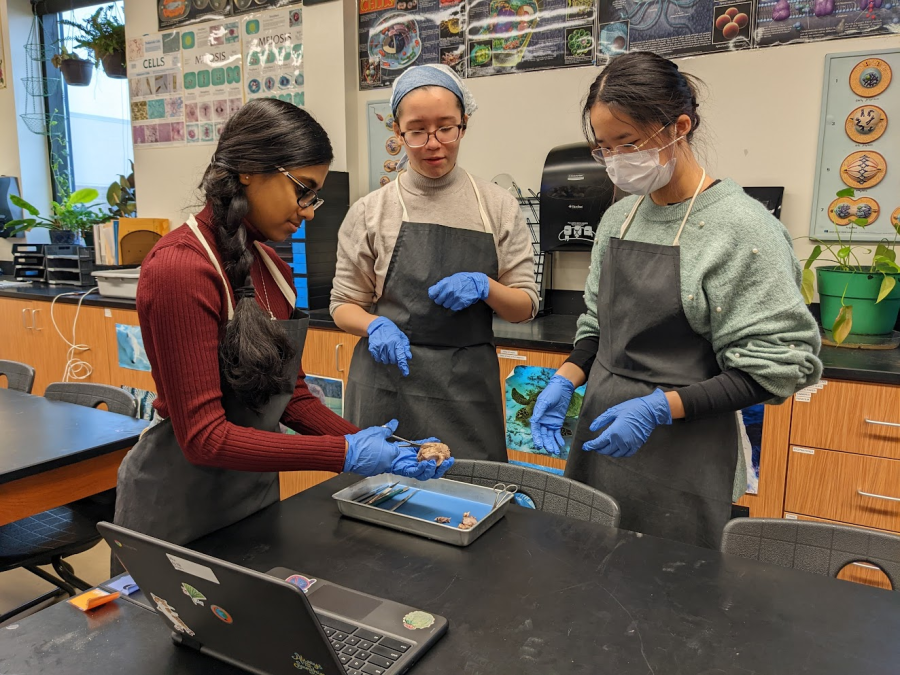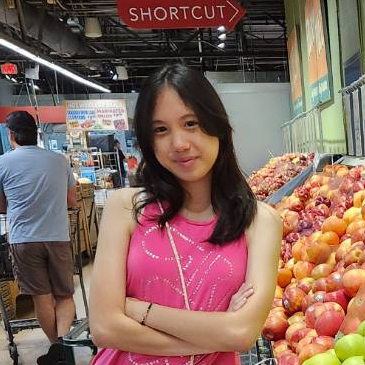Double Vision: Anatomy and Dissection Club Members Pair Up for Cow Eye Dissection
Using scissors, Anatomy & Dissection Club Student Council Representative Mishree Narasaiah ‘25 dissects a cow eyeball. Club officers participated in the dissection along with other members.
December 9, 2022
Anatomy & Dissection Club gathered to dissect cow eyes on Friday, Dec. 2 in Mr. Eric Scheiber’s room. Each month, the club comes together to dissect animal organs and learn about anatomy. Eyes are among the most common parts to obtain for dissection.
“With the money we collect from dues, [the club is] able to order [specimens] in bulk and get a discount since we’re a school. That’s how we get the stuff we need for the club,” Mr. Scheiber said. “Typically, the specimens come in packages of 10. We have about 30 people in the club, [so] to save money and to save time, we usually put the sections in pairs for students to do because usually, it’s a two-person job.”
During the dissection, club officers had time to participate alongside other members. However, before the dissection, they were responsible for many aspects of the dissection preparation, such as creating informational slides using their previous knowledge and learning experiences.
“I think the most challenging part of preparing to host a dissection is ensuring we have all the materials we need set up and finding a time that works best for most [members],” Anatomy & Dissection Club Student Council Representative Mishree Narasaiah ‘25 said. “Our club’s meeting times are highly dependent on when our dissection specimens arrive, and sometimes we need to adjust our timings to find a date for when we have the specimens ready and for when everyone can make it to the dissection.”
Club officers chose cow eyes in order to help members get accustomed to dissections. They felt that while a cow eye was more complex than the subject of the previous dissection, a sheep brain, it was still relatively simple.
“We [have] planned for [more] complicated specimens next semester, and we didn’t want to jump directly into those dissections without some proper practice beforehand,” Club President Einez Wu ‘23 said.
Dissecting the cow eye gave club members the opportunity to explore the internal structures of the eye.
“The most fun part of dissecting a cow eye was getting to the lens after cutting through everything else. In the beginning, dissecting a cow eye involves a lot of cutting through excessive tissue around the eye,” Narasaiah said. “However, when you get to the optic nerve and start cutting in from there, you reach the vitreous humor, which is the liquid at the back of the eye. From there, it gets really interesting as you can start to explore more internal structures, like the retina, tapetum, iris, and finally the lens.”
For future dissections, the club is planning on dissecting perches, turtles, and fetal pigs in order to explore the differences among the organ systems of fish, reptiles, and mammals.
“I was at first most excited about the fetal pig dissection, but now I think I’m more looking forward to the turtle dissection,” Wu said. “The specimens we got are preserved very nicely and intact, and I’m super excited to look at them in detail on the dissection tray.”
Anatomy & Dissection Club will meet again next semester.



